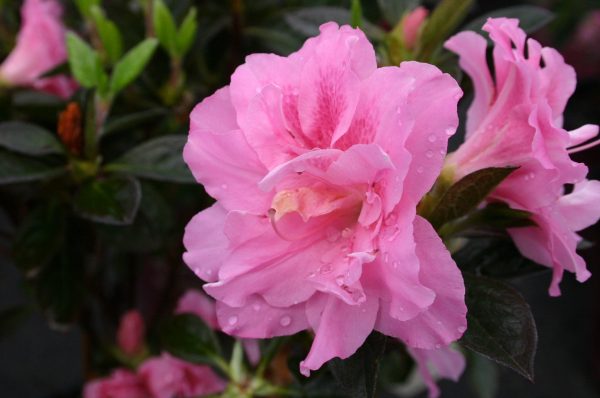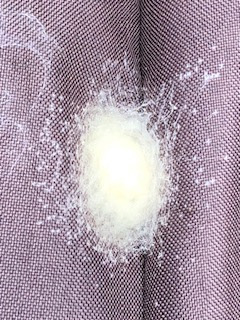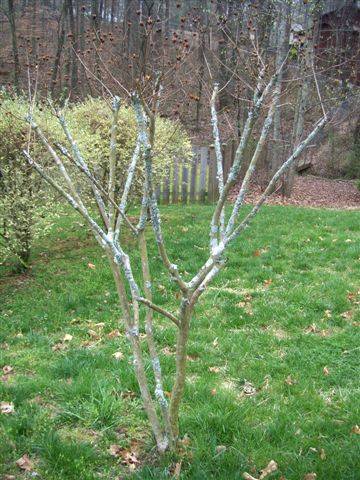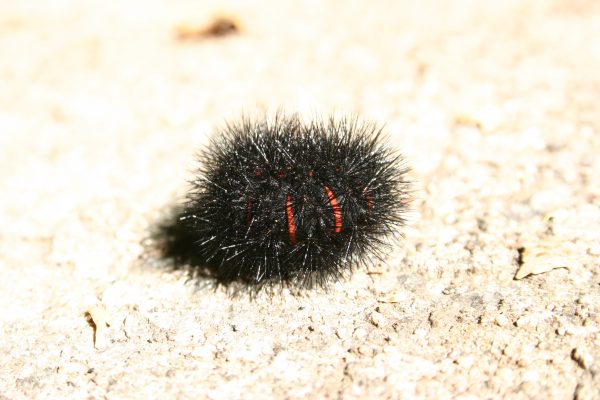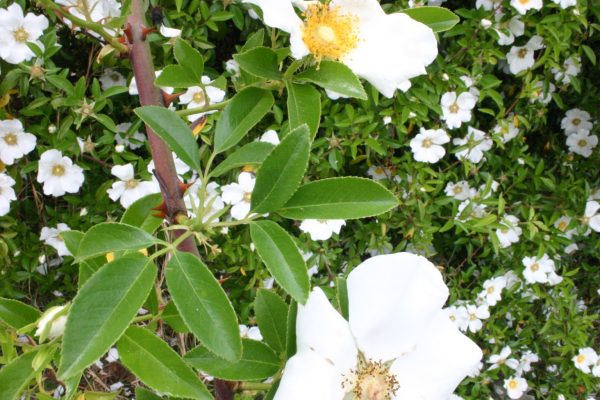Slug and Snail – Control
I found #133 under the clothes dryer recently. Unfortunately, I didn’t find #133 alive. Only his previous home was back there, covered in lint, when I moved the dryer.
#133 was one of three hundred large snails I raised in my basement a few years back. My DeKalb 4-H colleagues planned a science curriculum based on caring for classroom snails. Our club members would test their snails’ ability to maneuver through a maze and traverse a rope bridge. To me fell the task of holding the snails until they could be distributed to the 4-H clubs scattered throughout DeKalb County.
Each snail had to be individualized so I used a water-proof marker to put a number on the shell of each of my slow-moving charges. Unfortunately, I underestimated the ability of snails to press against the plastic lid of their cage. The day after the snails were delivered to my house I found half of them escaped and leaving viscous trails in my basement. Most were easily recovered (I didn’t exactly have to run to catch them) but a couple made a clean break and were never seen again.
Until I moved the dryer last week.
I’ll never forget the sound of hundreds of snails eating lettuce that I gave them each day. One doesn’t think of snails being noisy eaters but the whispery crunch of their rasping mouths on crisp leaves was a bit eerie.
Snails and slugs can chew numerous ragged holes in the leaves of hosta, impatiens and other perennial and annual landscape plants. These two mollusks are closely related – the main difference is that the snail has a shell and the slug does not. They both travel on a trail of mucous. A silvery slime trail near a damaged plant is good evidence that a slug or snail is the culprit.
CHANGE THEIR ENVIRONMENT For every slug or snail you see, there are probably twenty more in hiding. It is important to keep a population under control rather than waiting until there are more than you can handle.
The first step to control slugs and snails is to reduce breeding sites. Remove boards, rocks or bricks lying on the ground. If you have a large area covered in English ivy, thin it out occasionally to allow the ground to dry underneath. The space underneath a dog house or garden shed makes an excellent breeding place. Move the dog house occasionally or seal the space beneath.
You can make a spot attractive to slugs and then hand-pick and destroy them each day. A board supported off the ground by small rocks will attract them. So will an empty half-cantaloupe rind. The collected slugs or snails can be drowned in soapy water.
Wood ashes, sawdust and lime have not been found to be effective for repelling snails. On the other hand, a thin strip of copper placed around a pot or raised garden bed does repel slugs by causing them to be shocked as they crawl over it. Rather than futilely searching for copper strip, try using copper screen. Many hardware stores sell copper screening material along with the familiar aluminum and fiberglass products. Cut it to width and length with old kitchen shears. Attach it to the edge of a pot with silicon caulk. Use tacks to affix it to the edge of a wood-lined raised bed.
CHEMICAL CONTROL A commonly suggested slug trap is made by pressing a shallow bowl in the ground until the lip is level with the ground surface. Fill the bowl with beer to attract and drown the pests. Experienced gardeners estimate that only half of the creatures that fall in the beer are actually killed.
Slug and snail poisons are available but use care with them. The poisons are toxic to humans and pets and they smell good enough to attract a dog or small child. Place the poison in child- and pet-proof containers.
SlugStop contains thick coconut oil soap which can be squirted around plants you want to protect. Iron phosphate (Sluggo, Escar-Go!) is another less-toxic product for slug and snail control.
Old #133 met an untimely end because he couldn’t muster enough speed to escape. Lest your plants meet a similar fate, get a move on to control your slug and snail population early this spring so you won’t be overwhelmed by them in the summer.



